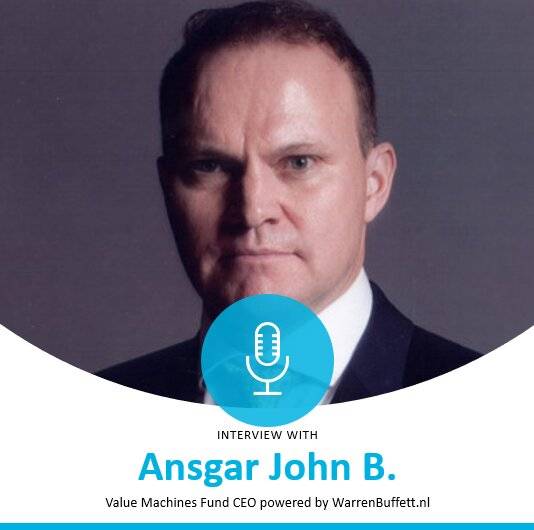Find out our new interview with George Visvikis, Business Owner at Product.me. Enjoy our talk about the future of physical stores, where George mentions the need of an evolution in the experience provided on them; the advantages of both online and offline channels, where we focus on the importance of creating a mix of them with omnichannel strategies; we also talk about the best techniques to improve your customers loyalty; and finally we make a general view about the future of the retail sector.
Continue reading this interview with George Visvikis and enjoy his opinions.
Retail Interview – The advantage of physical stores
We start by assessing the current context of the retail sector. Will offline retail disappear?
Starting from 2021, because of the impact of the COVID-19 pandemic, changed consumer behavior rising e-commerce, Online retail was gaining momentum, with many consumers increasingly embracing the convenience of shopping from home and the wider variety of products available online.
But it’s unlikely that offline retail will completely disappear in the foreseeable future. Physical stores offer unique advantages that online retail cannot fully replicate. Some of these advantages include:
- Personalized experience.
- Immediate gratification.
- Social experience.
- Returns and exchanges.
- Niche and specialty stores: for unique products and experiences that require direct interaction.
Many traditional retailers have been incorporating omnichannel strategies, merging their online and offline presence to provide a seamless shopping experience for customers.
In the future, offline retail may continue to exist but could evolve to focus more on experiential elements, entertainment, and community engagement to attract and retain customers. Brick-and-mortar stores might become showrooms or experiential spaces, where customers can try out products before making purchases online.
Overall, the retail sector is likely to see a blend of online and offline channels, with each offering unique advantages and catering to different consumer preferences. It will be crucial for retailers to innovate, adapt, and leverage technology effectively to stay competitive.
What are its defects and virtues in front of online retail?
Offline retail and online retail each have their own set of virtues and defects when compared to one another. Let’s take a closer look at some of the key aspects:
Offline Retail – Virtues:
- Tangible experience.
- Personalized service.
- Social interaction.
- Instant gratification.
- Reduced return complexities.
Offline Retail – Defects:
- Limited geographical reach.
- Operating costs.
- Limited inventory.
- Limited hours of operation.
Online Retail – Virtues:
- Global reach.
- Convenience.
- Wider selection.
- Lower overhead costs.
- Data-driven marketing and personalization.
Online Retail – Defects:
- Lack of tangible experience.
- Delayed gratification.
- Customer service challenges.
- Returns and shipping complexities.
Both offline and online retail have their strengths and weaknesses. The future of retail is likely to be a blend of these two channels, with retailers adopting omnichannel approaches to cater to various consumer preferences and needs. Embracing technology and providing exceptional customer experiences will be crucial for retailers to thrive in this competitive landscape.
What does it take for physical stores to work? Is there a magic recipe?
The success of a retail store depends on several factors, and while there is no “magic recipe” that guarantees success, some key elements can significantly influence a store’s performance. Here are some important factors that contribute to a store’s success:
- Product Selection: Offering a well-curated and diverse range of products that cater to the target audience’s needs and preferences is essential. Understanding customer demands and staying up-to-date with trends can help a store maintain relevance.
- Location: Choosing the right location is crucial. High foot traffic areas or locations near the target customer base can increase visibility and potential sales.
- Customer Experience: Creating a positive and memorable shopping experience is paramount. This includes factors such as excellent customer service, a welcoming environment, ease of navigation, and clean and organized store layouts.
- Pricing and Value: Competitive pricing and providing good value for money are essential to attract and retain customers.
- Marketing and Promotion: Effective marketing strategies, both online and offline, can boost awareness and drive traffic to the store. Engaging with customers through social media and other channels can foster loyalty.
- Omnichannel Integration: Seamlessly integrating online and offline channels allows customers to have a consistent and convenient shopping experience.
- Data Analytics: Utilizing data analytics to understand customer behavior, preferences, and purchase patterns can help optimize inventory, promotions, and marketing efforts.
“Offline retail may continue to exist but could evolve to focus more on experiential elements, entertainment, and community engagement to attract and retain customers”
How is customer loyalty achieved?
Customer loyalty is achieved through consistent and exceptional customer experiences. Here are some strategies to build and maintain customer loyalty:
- Personalization: Tailoring offers, promotions, and recommendations based on individual preferences enhances the customer experience.
- Rewards Programs: Implementing loyalty programs that offer rewards, discounts, or exclusive access to special events can incentivize repeat purchases.
- Excellent Customer Service: Providing exceptional customer service and addressing issues promptly and satisfactorily can create loyal customers.
- Communication: Regularly engaging with customers through personalized communications, newsletters, or social media can help keep the brand top-of-mind.
- Exclusive Content: Offering exclusive content, products, or experiences to loyal customers can make them feel valued and appreciated.
How do you see the future of retail?
As for the future of retail, it will likely continue to be shaped by technology and changing consumer behaviors. Some potential trends and developments include:
- Continued Growth of E-commerce: Online retail is expected to continue its growth trajectory, with more businesses expanding their digital presence.
- Omnichannel Retailing: Retailers will likely adopt more integrated omnichannel strategies, combining online and offline experiences for customers.
- Experiential Retail: Physical stores may focus more on providing unique and immersive experiences that cannot be replicated online, drawing customers to physical locations.
- Personalization and AI: Advances in artificial intelligence and data analytics will enable more personalized shopping experiences, with AI-driven product recommendations and tailored marketing efforts.
- Sustainable Practices: Consumers’ increasing awareness of environmental issues may drive demand for more sustainable and eco-friendly products and practices.
- Augmented Reality and Virtual Reality: These technologies may play a significant role in enhancing the online shopping experience, allowing customers to “try before they buy” virtually.
- Last-Mile Delivery Innovations: Improvements in last-mile delivery solutions, including drone and autonomous vehicle deliveries, could make online shopping even more convenient.
- Social Commerce: Social media platforms may become more integrated with e-commerce, enabling direct purchasing through these channels.
Overall, the future of retail will be dynamic and shaped by a combination of technology, changing consumer expectations, and businesses’ ability to adapt and innovate.







